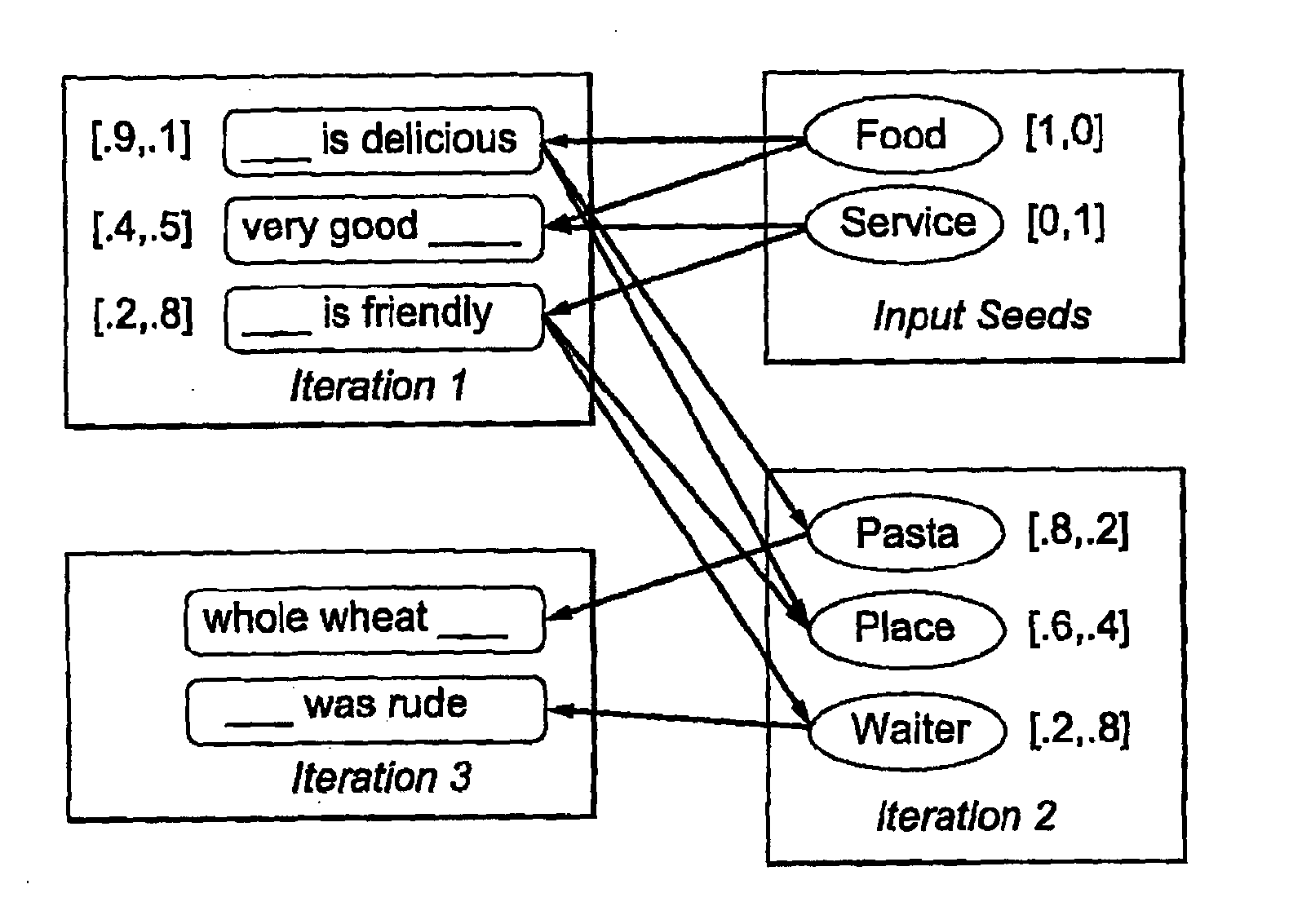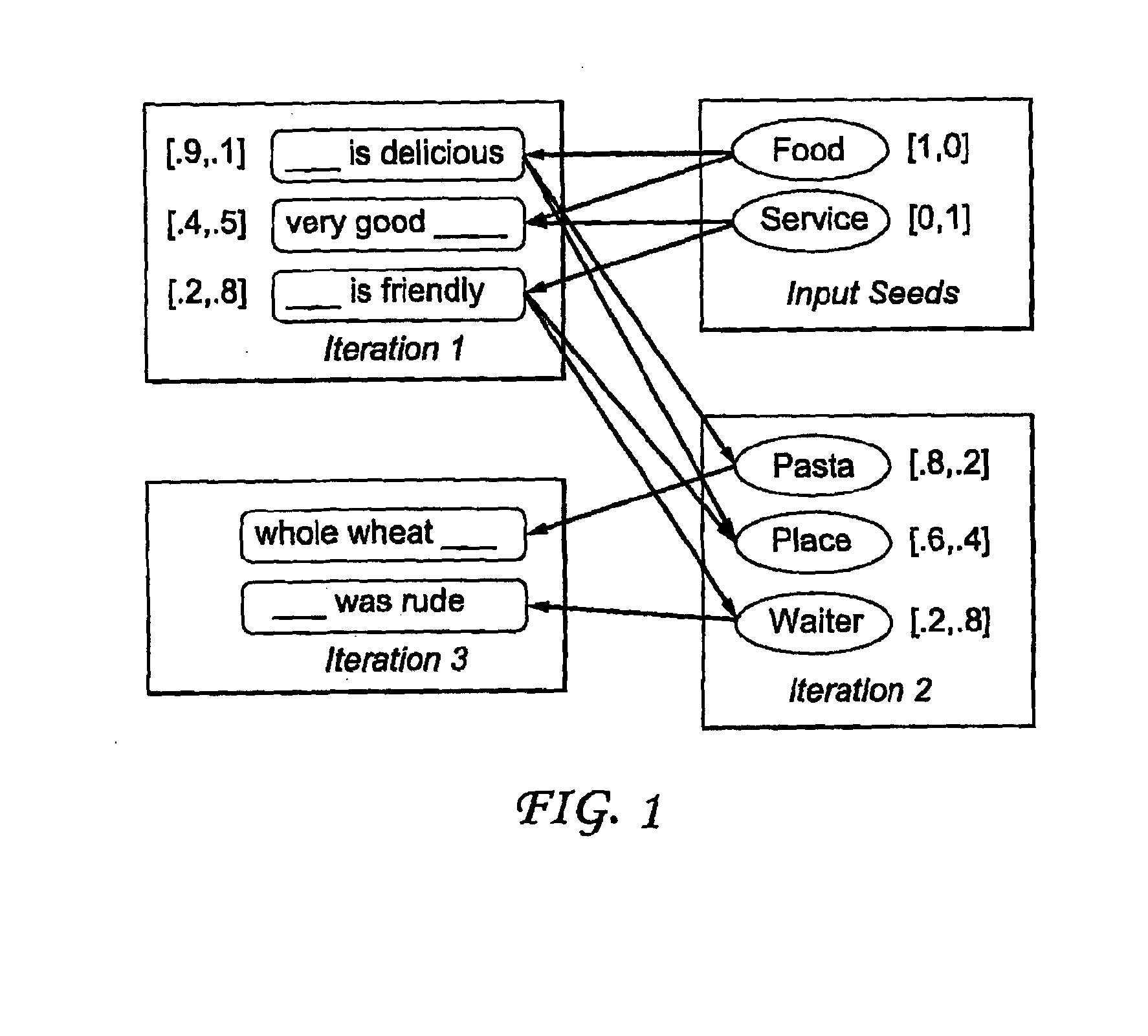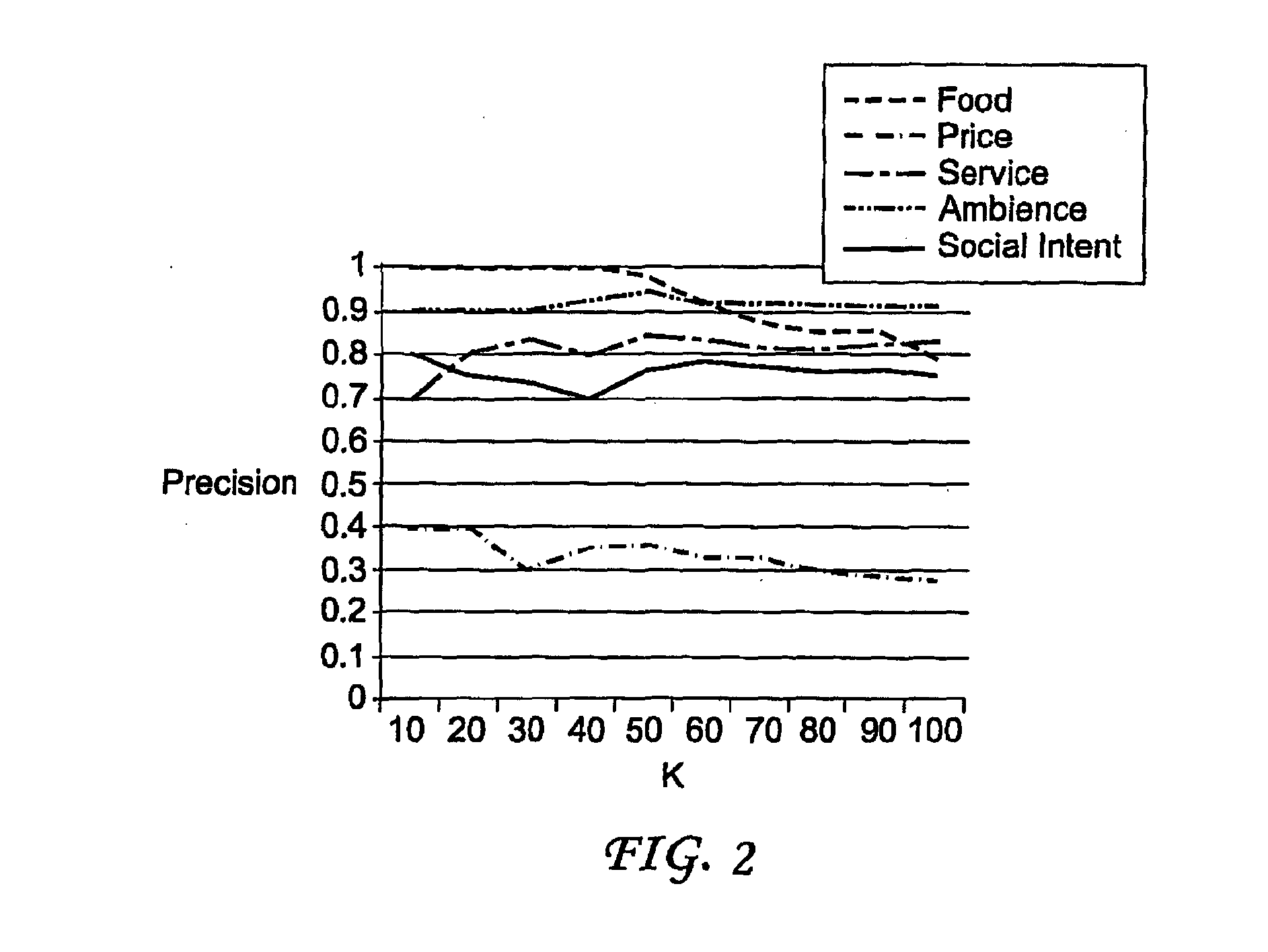Contextually propagating semantic knowledge over large datasets
- Summary
- Abstract
- Description
- Claims
- Application Information
AI Technical Summary
Benefits of technology
Problems solved by technology
Method used
Image
Examples
Embodiment Construction
[0033]The present invention clusters the large amount of text available in user reviews along important dimensions of the domain. For instance, the popular website TripAdvisor identifies the following six dimensions for user opinions on Hotels: Location, Service, Cleanliness, Room, Food and Price. The present invention clusters the free-form textual data present in user reviews via propagation of semantic meaning using contextual information as described below. The contextually based method of the present invention results in learning inference over a bipartite (words, context descriptors) graph. A similar semantic propagation over a word co-occurrence graph that does not utilize the context is also described below. The two methods are then compared.
[0034]The present invention is a novel method for clustering the free-form textual information present in reviews along semantically coherent dimensions. The semi-supervised algorithm of the present invention requires only the input seed...
PUM
 Login to View More
Login to View More Abstract
Description
Claims
Application Information
 Login to View More
Login to View More - R&D
- Intellectual Property
- Life Sciences
- Materials
- Tech Scout
- Unparalleled Data Quality
- Higher Quality Content
- 60% Fewer Hallucinations
Browse by: Latest US Patents, China's latest patents, Technical Efficacy Thesaurus, Application Domain, Technology Topic, Popular Technical Reports.
© 2025 PatSnap. All rights reserved.Legal|Privacy policy|Modern Slavery Act Transparency Statement|Sitemap|About US| Contact US: help@patsnap.com



